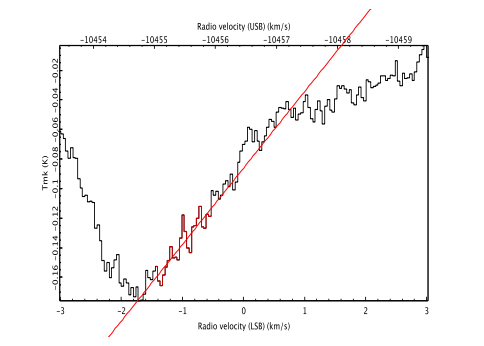Pluto May Have Comet-Like Tail
Pluto’s has a highly elliptical orbit that takes it inside the orbit of Neptune and then out into the distant icy reaches of the Solar System.

Astronomers have long believed that this would have important effects on the dwarf planet’s atmosphere. Their models indicate that Pluto’s atmosphere is likely to swell as it moves closer to the Sun and the poles sublimate. Later, the atmosphere should condense as it cools down.
That should make the surface of Pluto a barren windswept land that constantly changes as it is battered by supersonic winds. Indeed, Hubble images show that Pluto’s surface has a number of interesting features that seem to be changing.
In recent years, other evidence has emerged to back up suspicions that Pluto is more complex than astronomers initially imagined.
Today, Jan Greaves at the University of St Andrews in Scotland and a couple of buddies reveal the details of their own study of Pluto’s atmosphere using the 15 meter James Clerk Maxwell Telescope in Hawaii.
These guys find clear evidence of gaseous carbon dioxide at altitudes of up to four times Pluto’s radius. And they say there is significantly more of the stuff than the last time CO was detected in 2000.
That’s strange. Pluto is currently moving away from the Sun after its closest approach in 1989 and ought to be cooling down. One explanation is that the south pole has recently come out of shadow for the first time in 120 years and for a short time may be evaporating more quickly than the north pole is condensing.
But Greaves and co’s most interesting discovery is a small red shift in the CO spectrum indicating that Pluto’s atmosphere must be moving away from Earth in an unexpected way.
Their tentative explanation is exciting: “The marginal CO line red-shift, if real, could indicate a flow forming into a comet-like tail directed away from the Sun,” they say.
The thinking is that the expanding atmosphere is interacting with the solar wind and being shaped into a tail.
That could throw the cat among the pigeons next time Pluto’s status as a planet comes up for discussion. It gives ammunition to the naysayers who can now claim that far from being a planet or even a dwarf planet, Pluto is merely a giant comet.
Astronomers will find out more in the coming years. The world’s telescopes will be increasingly trained on Pluto as the arrival of the New Horizons mission draws near. Its flyby is scheduled for 2105.
Ref: arxiv.org/abs/1104.3014: Discovery Of Carbon Monoxide In The Upper Atmosphere Of Pluto
You can now follow The Physics arXiv Blog on Twitter
Keep Reading
Most Popular
Large language models can do jaw-dropping things. But nobody knows exactly why.
And that's a problem. Figuring it out is one of the biggest scientific puzzles of our time and a crucial step towards controlling more powerful future models.
How scientists traced a mysterious covid case back to six toilets
When wastewater surveillance turns into a hunt for a single infected individual, the ethics get tricky.
The problem with plug-in hybrids? Their drivers.
Plug-in hybrids are often sold as a transition to EVs, but new data from Europe shows we’re still underestimating the emissions they produce.
Stay connected
Get the latest updates from
MIT Technology Review
Discover special offers, top stories, upcoming events, and more.